It is sometimes confusing for those new to classic style to learn how commonly jewelry is employed as a classic style accessory. This is because, in society at large, especially mainstream Western cultures, there is a perception that men do not and should not wear jewelry.
This belief is somewhat odd when you take into consideration that, for millennia and in most of the world societies, men wore jewelry of comparable types and to a comparable degree to women, and the belief that men should not wear jewelry is a relatively modern phenomenon, localized in only some, albeit dominant cultures. What brought about this change and how jewelry was viewed in menswear – that’s exactly what we’ll learn today.
The History of the Decline of Men’s Jewelry
You can learn about the long and storied history of jewelry and menswear as part of our men’s jewelry guide. So, today’s guide picks up in the late 18th century during a seismic sartorial shift known as “The Grande Renunciation Masculine” – or “The Great Male Renunciation.”
Men’s Jewelry: All About Rings, Chains, & More Accessories
As you can probably guess from the name, this menswear movement originated in France and was essentially a rejection of the aesthetics that typified high-end menswear for centuries – vibrant colors, exaggerated silhouettes, and ostentatious detailing, starting as a reaction against the decadence that had defined the Royal Court prior to the French Revolution.
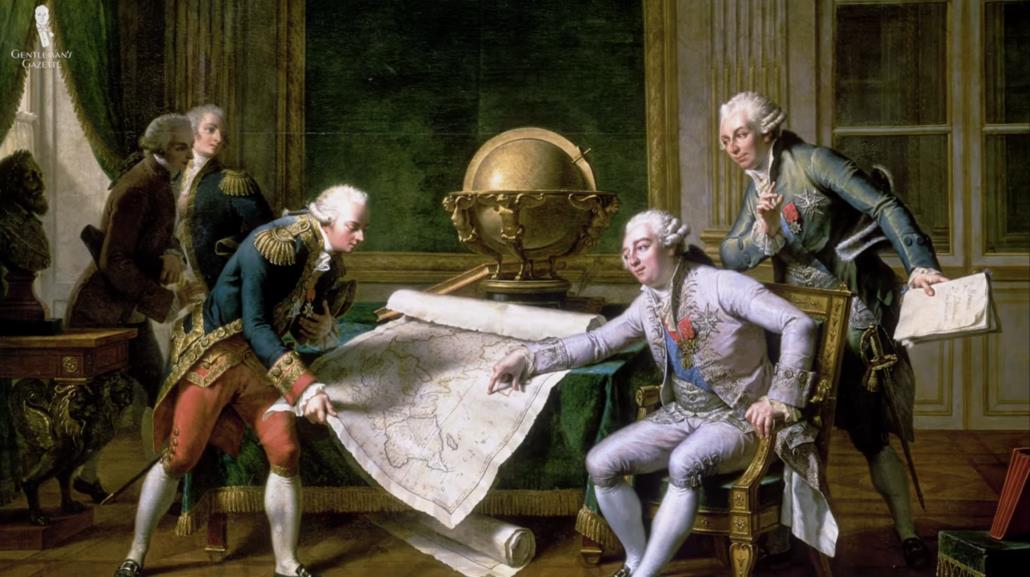
The Great Male Renunciation
The Great Male Renunciation was soon spread, adopted, and adapted by well-dressed gentlemen across the Western world, including Beau Brummell, who, as we argue here, could be considered one of the first men’s wear influencers.
For our purposes today, let us emphasize that, along with bold colors, dramatic cuts, and outlandish finery, ostentatious jewelry was often rejected by Western men as part of The Great Male Renunciation. And while some types of jewelry that had previously been worn by men, including earrings, brooches, bracelets, and oversized pendants, did fall out of favor at this time, the majority of jewelry categories were still being worn – albeit in more sedate, stately iterations.
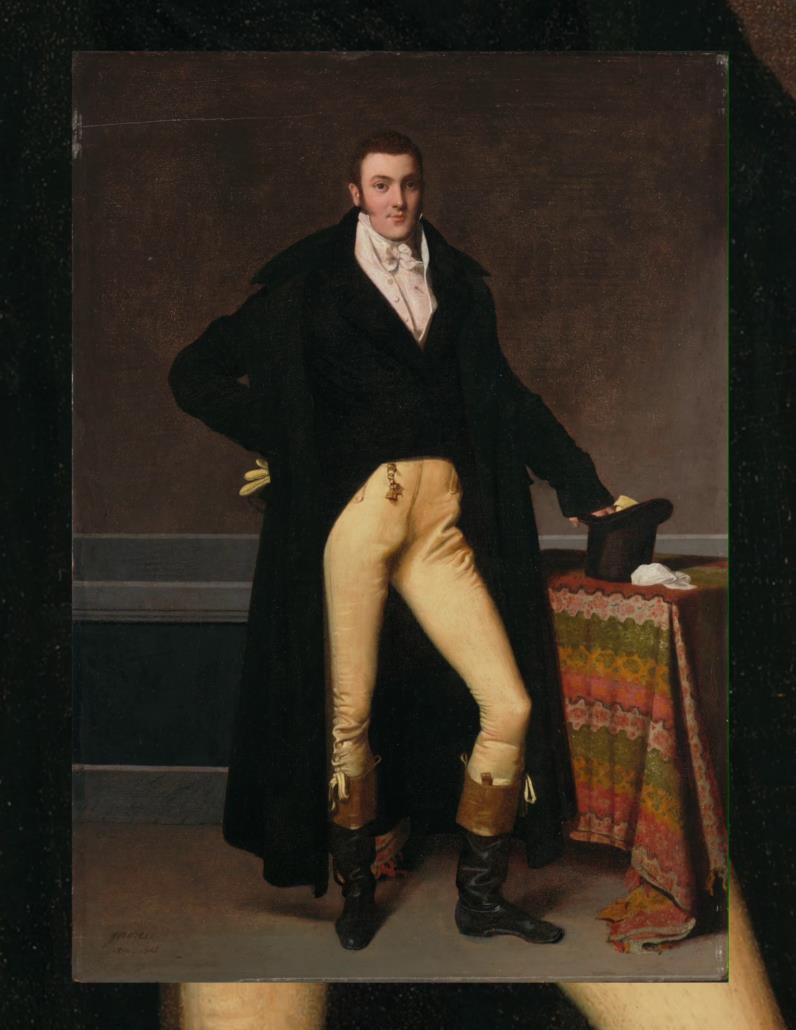
In the early 19th Centuries develops the fascination of jewelry that associates classic menswear.
In fact, the late 18th and early 19th Centuries saw the germination of jewelry types that would come to be closely associated with classic menswear in the 20th century. Although, a few trinkets didn’t quite survive to the Modern Age. Preston will teach you more about obscure menswear jewelry in another guide. You’ll learn, for instance, what a scarf ring is. I bet that scarves are involved.
They Wore What?! 10 Obscure Men’s Accessories & Jewelry
The end of the 19th century and the beginning of the 20th century saw the general standardization of accessories that we now consider classic menswear jewelry. In the Western canon, this included cufflinks, tie retainers, collar retainers, studs, belt buckles, chains and fobs, rings, lapel pins, necklaces, and bracelets. We have individual style guides pertaining to most of these articles, or you can learn about them generally in our aforementioned men’s jewelry guide.

Monkey Fist Knot Cufflinks – Vermeil Sterling Silver Yellow Gold Plated – Fort Belvedere
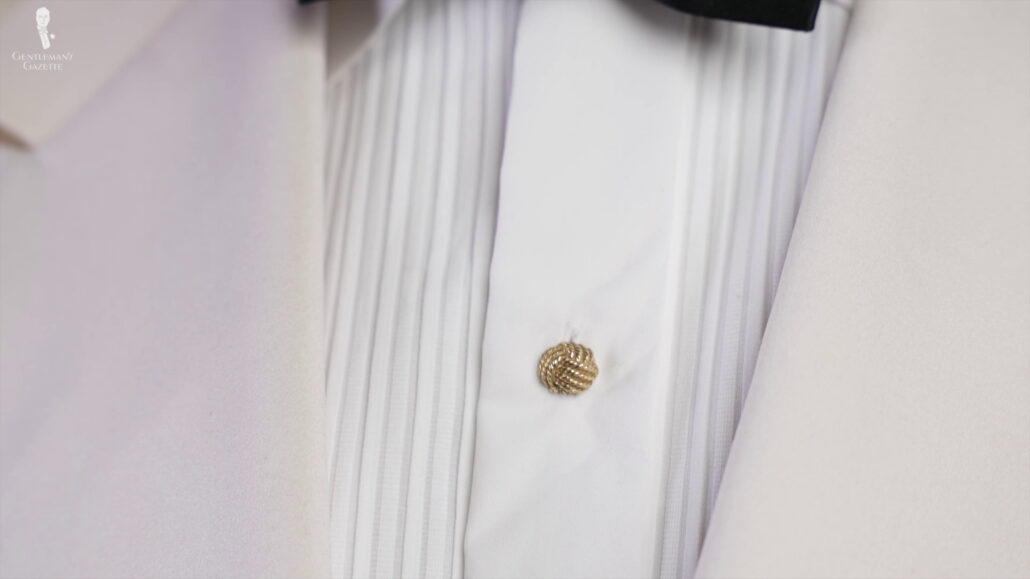
Yellow Gold Shirt Studs Monkey Fist Sterling Silver 925 – Fort Belvedere
The main point that we want to emphasize here is that, during The Golden Age of Menswear in the mid-1920s to the early 1960s, jewelry was a ubiquitous sight on well-dressed gentlemen, especially during the so-called “Accessories Renaissance” that followed both World Wars, where formally enlisted men, tired of regulation attire that usually forbade jewelry, embraced a wide array of jewelry types during peacetime. This is why you see so much bling in post-war period shows like “Boardwalk Empire” and “Mad Men.” But, as The Golden Age of Menswear came to close, fashionable forces collided that would drastically change the landscape of men’s jewelry and the role and perception of jewelry in menswear for decades to come.
The late 1960s and 1970s were one of the most turbulent times in history, and the clothing scene was no different as the Golden Age of menswear came to a close – I mean, “clothes.” We covered this topic in greater detail in our guide on What Men Really Wore in The 1960s. But, for now, we can just emphasize that cultural forces valorize the unique, the highly personal, and the new, while the burgeoning force of fast fashion made it easier than ever before for men to fill their wardrobes with exuberant, outlandish, and unexpected clothing.
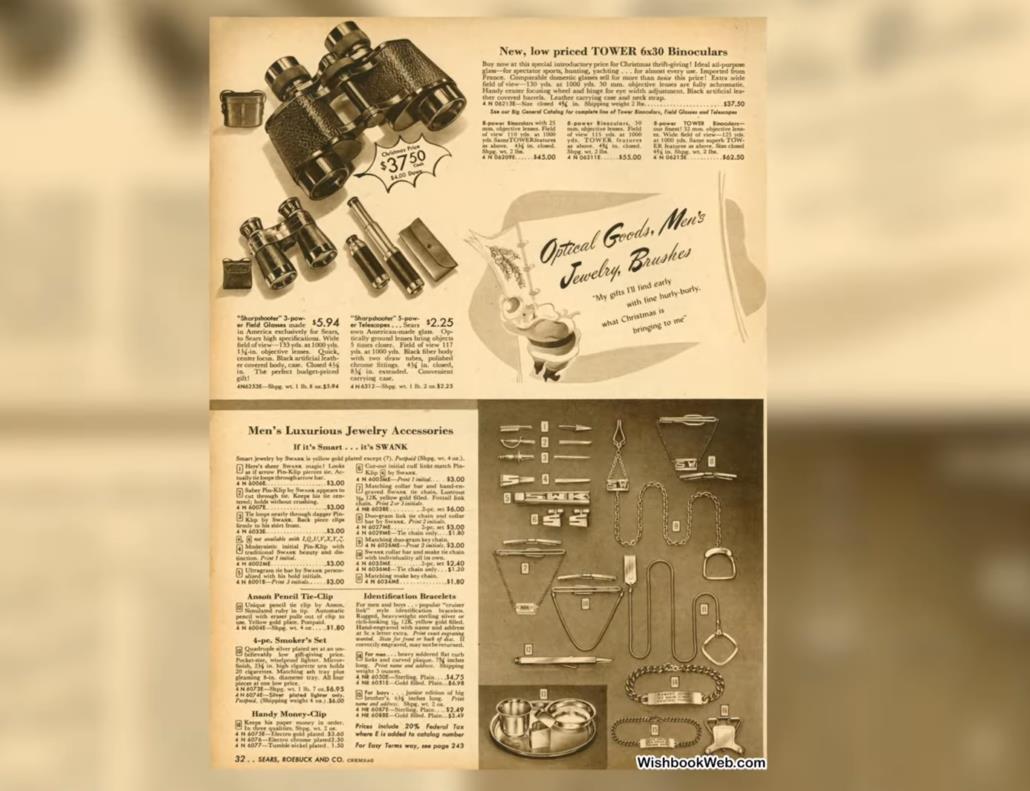
The bigger is a better trend in jewelry.
This term applies to accessories like jewelry as well, and the 60s and 70s saw men’s jewelry assume proportions, proliferation, and popularity not seen since before The Great Male Renunciation. The “Bigger is better” approach to jewelry reflected larger trends in menswear at this time and placed considerable value on flash, obvious luxury, and brand consciousness.
However, when it came to answering the question: “Can Mr. T bear the cumulative weight of the entire Fort Knox on her shoulders?”, the 70s only asked, “Can we do it?”, not “Should we do it?”
Like many fashions that developed after The Golden Age of Menswear, trends revolving around jewelry in the second half of the 20th century had such a “boom-and-bust” effect that, as soon as they fell out of fashion, they became largely unappealing and, in many respects, jarring when viewed in hindsight. Not surprisingly, many of the trends and resulting perceptions contributed directly to the contemporary perception that men shouldn’t wear jewelry – at least, in mainstream Western culture.
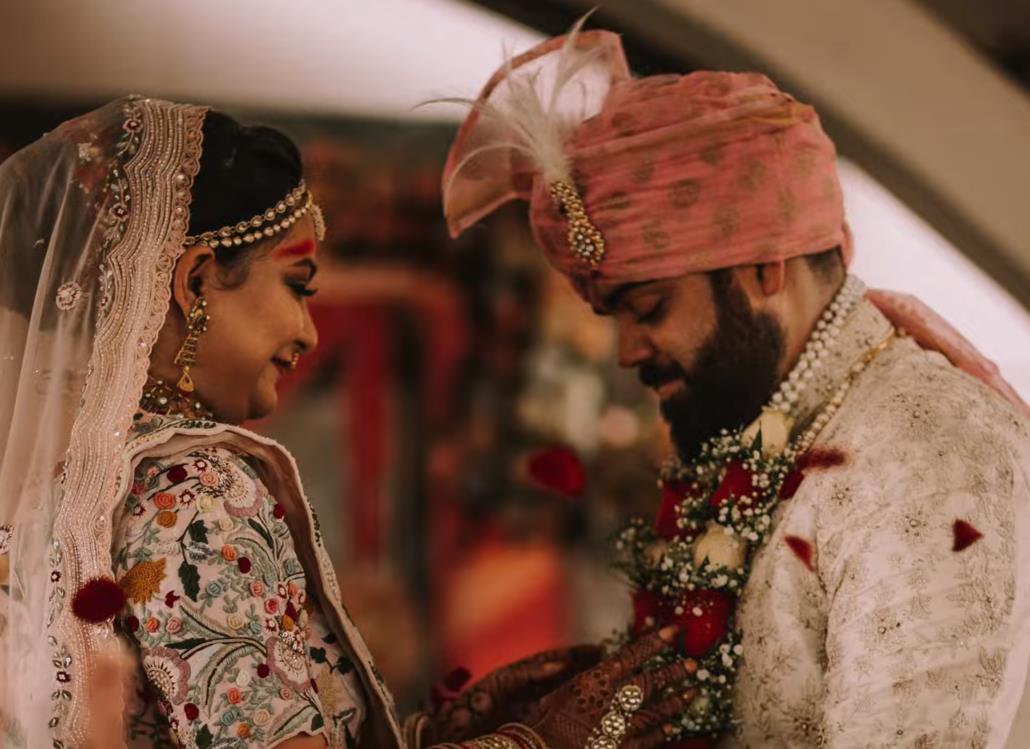
Men in various subcultures and styles enjoy wearing jewelry.
It’s important to remember that jewelry has been worn and enjoyed by men in various subcultures and style spheres for decades, even if mainstream culture started to turn away from men’s jewelry after The Golden Age of Menswear.
What Men REALLY Wore in the 1930s
Why Did Men Stop Wearing Jewelry?
Let’s now consider six reasons that we have identified as to why mainstream menswear rejected jewelry.
1. Gendered Perceptions
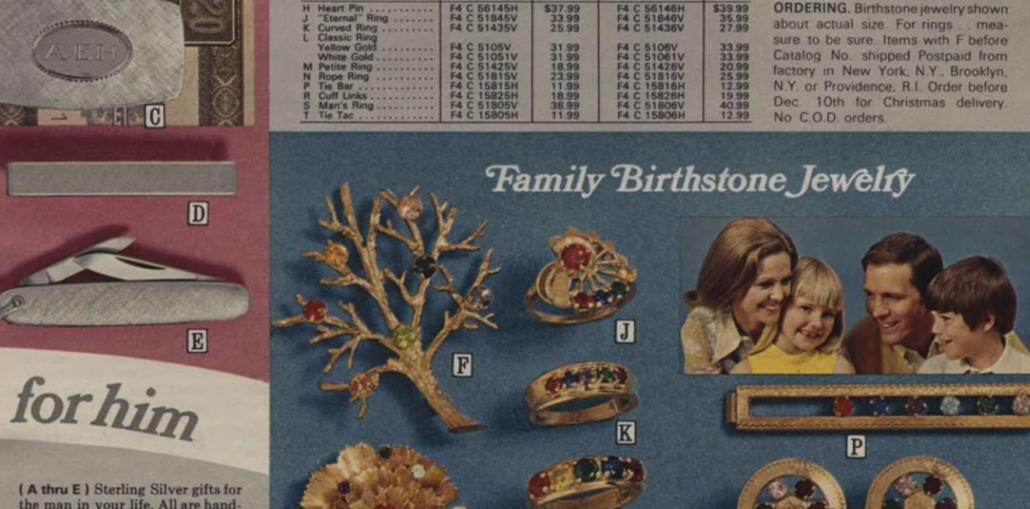
It was during the Great Male Renunciation era that jewelry was unmanly.
The embrace of glitzy, glamorous, glittery jewelry in the late 60s and 70s intentionally flew in the face of gendered conventions that had been around since The Great Male Renunciation; however, the resulting backlash of men’s jewelry worn typically in this era contributed to the belief that all jewelry was inherently effeminate. This fell into a self-fulfilling prophecy, reinforcing the assumption that men shouldn’t and didn’t wear jewelry.
Obviously, you should wear whatever jewelry you like, regardless of how it is culturally coded. It is clearly incorrect to assume that all jewelry is effeminate when jewelry has such a long-standing history in menswear.
Even actors associated with rough-and-tumble, rugged characters like John Wayne and Gary Cooper wore jewelry, and who’s more masculine than The Duke himself?
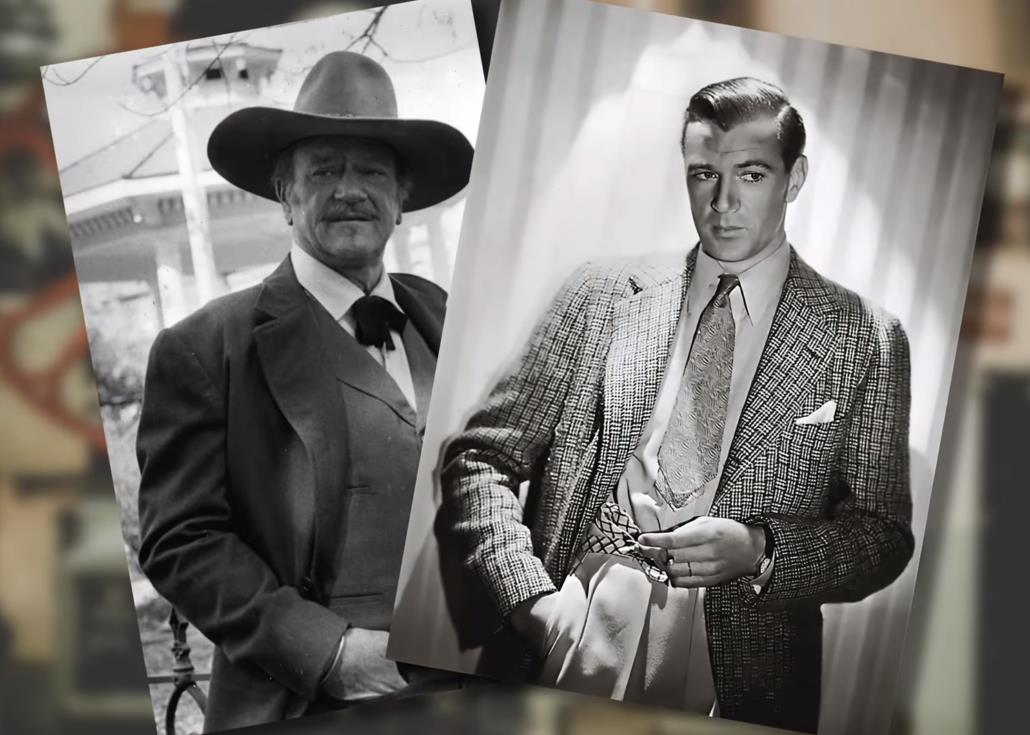
Famours celebrities who are manly looking like John Wayne and Gary Cooper
If you prefer to wear jewelry conventionally coded as masculine, just stick to types, styles, and designs typical from The Golden Age of Menswear. The selection at our Fort Belvedere store has been carefully designed and curated to reflect the very best of what the 20s, 30s, and 40s had to offer.
2. Implied Compensation

The wrong perception of wearing oversized and eye catching jewelries
Because it was often oversized, overwrought, and over-indulgent, overly large jewelry in the 60s and the 70s and today is sometimes taken as compensation. Because some men utilize jewelry to make themselves seem cooler, wealthier, or more attractive – the assumption is that all jewelry worn by men is being used in this way.
This perception of flaunted wealth and conspicuous consumption that is meant to awe and intimidate is also why some types of jewelry, especially chains, bracelets, and pinky rings, are associated with organized crime figures. Portable wealth is also important to criminals who might need to get out of town quickly if a caper doesn’t go as planned. But just because some men wear jewelry as compensation, it doesn’t mean that all men do.
If you’re wearing jewelry because it works with your style and not to instill false confidence or belittle others, it won’t appear like you’re compensating, nor will anyone think that your wearing jewelry is vanity or to stroke your own ego.
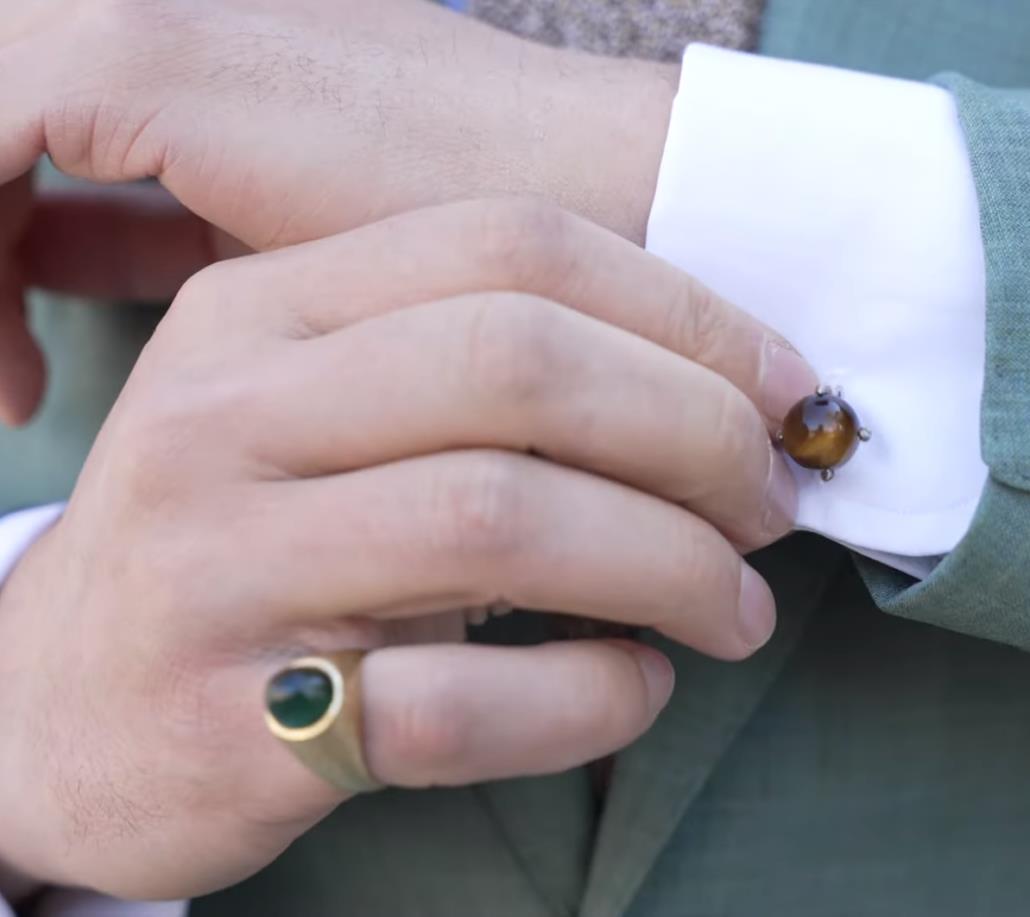
You wear jewelries because it matches your style
While you can’t help how others might perceive your clothing and accessory choices, wearing tasteful, timeless jewelry in an understated and elegant way will reduce the likelihood that anyone would assume that you’re compensating for anything.
Following the “do’s and don’ts” of men’s jewelry that Raphael highlights in another guide is a great place to start.
7 Do’s and Don’ts for Men’s Jewelry
3. Distracting
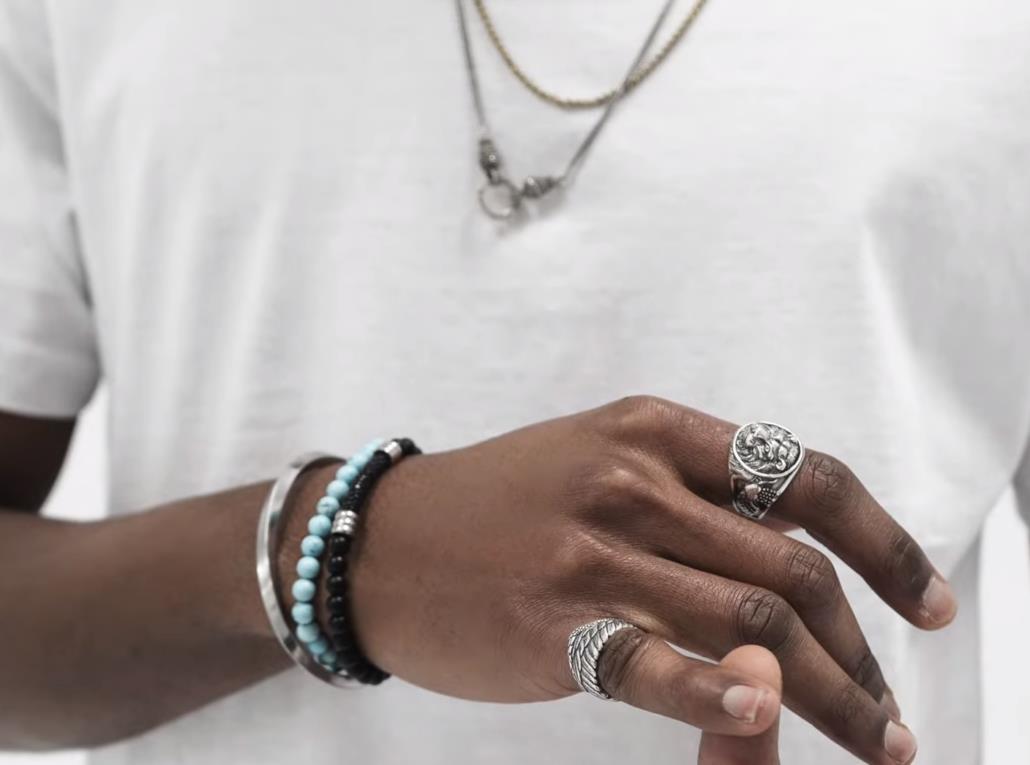
Stay away from wearing big and bolder colors of jewelry pieces
Sometimes, men avoid jewelry, not because of what others may think of it, but because they’re concerned. It automatically becomes the center of attention because it is often colorful, uniquely textured, or lustrous and not a common sight for many men today.
Jewelry can easily overshadow other garments and articles and detract from appreciation of the rest of the outfit. Obviously, if you’ve taken the time to construct and put together a particular look, you don’t want viewers focusing on just one aspect of it. But, leaving out jewelry entirely deprives you of access to accessories that, when properly employed, can elevate every aspect of your look.

Keep it clean and classic
Men’s jewelry doesn’t have to be a statement piece; collar jewelry and cufflinks, in particular, can easily be integrated into classic style without appearing overwhelming. When it comes to all types of jewelry, wearing jewelry that is consistent with your look and style will elevate the entire look, provided that all the pieces blend harmoniously.
Providing guidance on how to wear men’s jewelry in a refined and understated way is something that we focus on in all of our dedicated jewelry guides.
4. Perceived Inconvenience
Other men avoid jewelry because they are afraid it’ll get in the way of their lifestyle; having to worry about jewelry getting scratched, dinged, tangled, or lost, along with the additional effort in cleaning and maintaining it, can make it seem like jewelry just isn’t worth it.
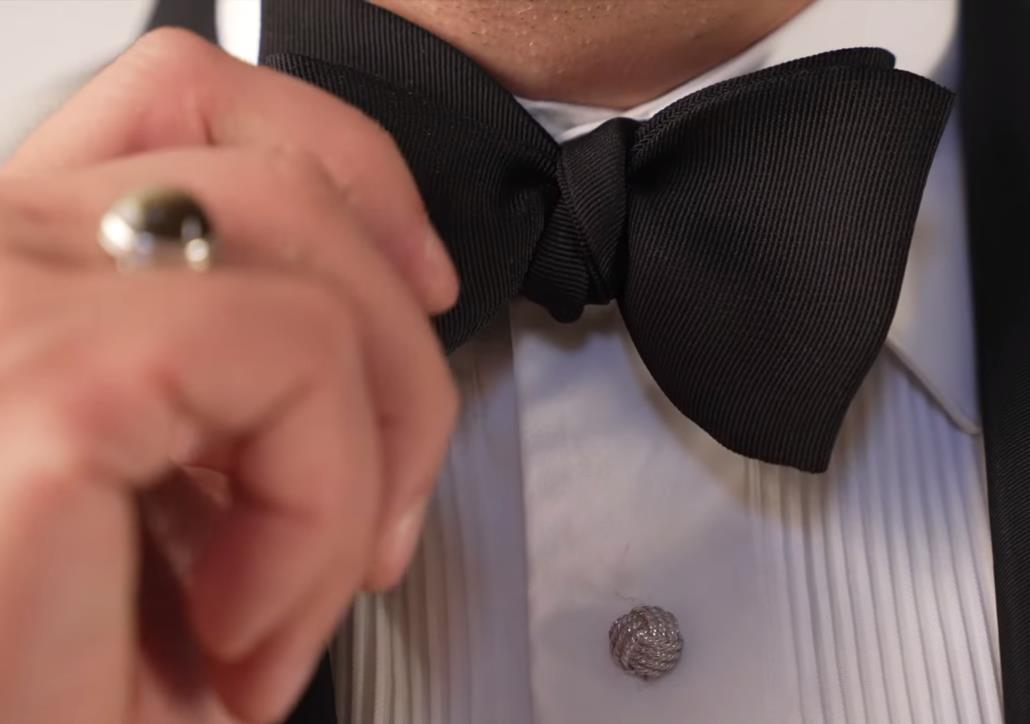
Jewelries should be suited to its occasion and convenience
Like with all menswear, there’s a time and a place for jewelry. Just like you wouldn’t sleep in a three-piece suit, you shouldn’t change your oil with fingers full of rings. By suiting your jewelry to the time, place, and your lifestyle, you can find jewelry that fits your needs. An elegant collar pin imparts instant panache to the office, while a simple and colorful bracelet can add a playful element on a casual day out.
Like any accessory, jewelry should be suited to the occasion, but there’s a type of jewelry for almost every occasion. And, yes, like any quality article, a certain amount of upkeep is associated with jewelry, but it’s a small price to pay for the versatility and variety that jewelry can impart on outfits in every dress code.
5. Hard to Find Genuine and Good Value
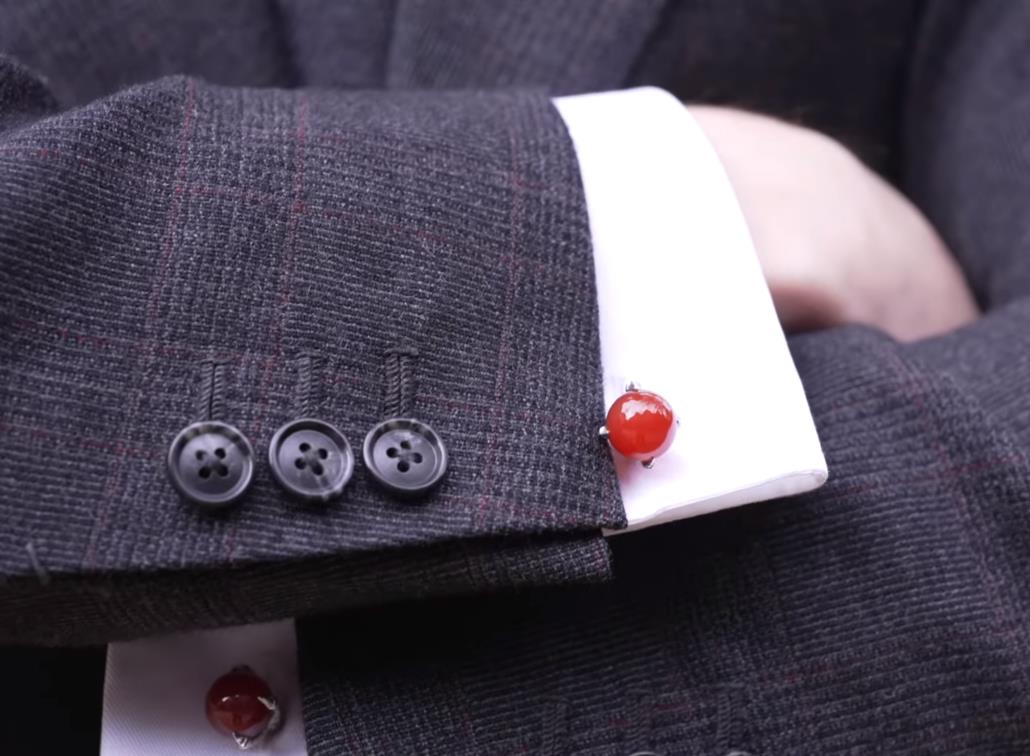
Invest in classic and timeless jewelry pieces
The menswear jewelry market is unfortunately flooded with two extremes: cheap, imitation jewelry that often lacks durability and appears tacky, and brand-name jewelry with inflated prices. And with the skyrocketing cost of precious metals, all menswear jewelry can prove prohibitively expensive. This difficulty in sourcing quality, good-value men’s wear jewelry should not, however, discourage you from taking advantage of these great accessories.
As with all challenges in menswear, this issue can be overcome with time, effort, and knowledge. When seeking out menswear jewelry, take time to research potential purchases for the best deals that satisfy your needs.

Do some research when purchasing your jewelries
Making a genuine connection with a local retailer or even a local jeweler can give you the inside scoop. You can also score great deals by buying secondhand, employing the tips Raphael shares.
Vintage Menswear: 25 Tips & Tricks for Thrift Store Shopping
Finally, trusted retailers that fully explain the design, craftsmanship, and markup of their products will provide you the information that you need to determine if a piece of jewelry is worth buying. That’s one reason why we tend to talk about our Fort Belvedere products so much in our content. The more we share with you, the more you generally know about our products, and while we feel so securely standing behind their quality, as with many big purchases in menswear, a quality over quantity approach that privileges good cost-per-wear is a formula for success when investing in men’s jewelry.
6. Lack of Knowledge and Experience
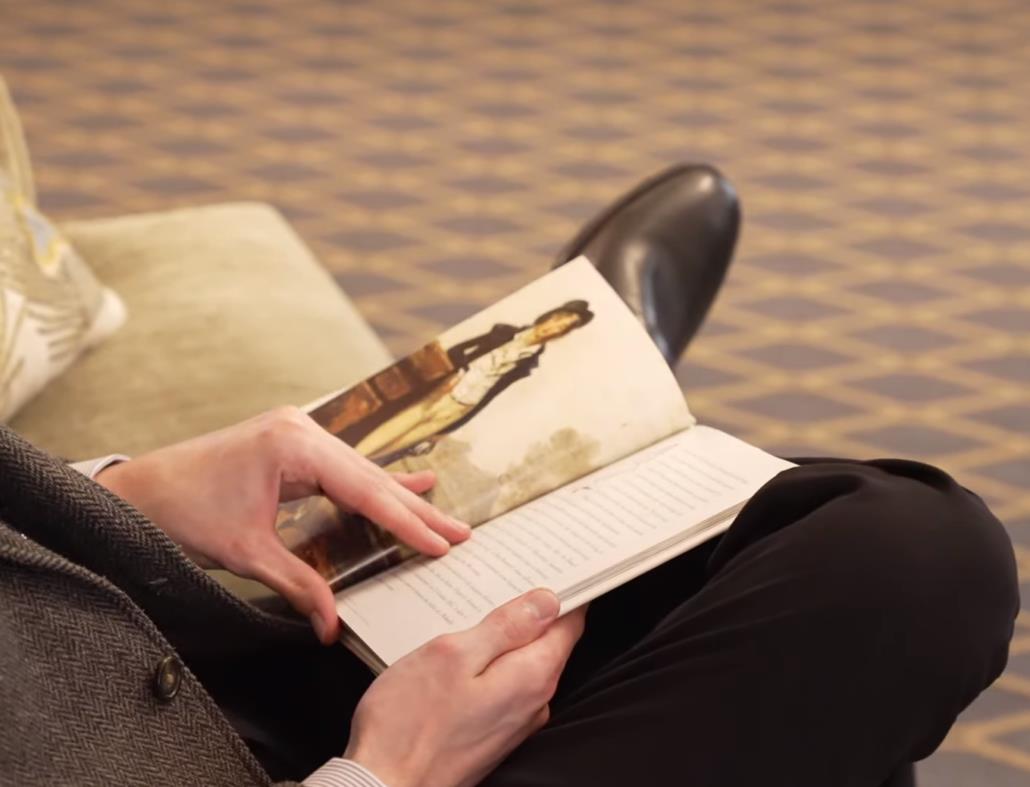
Being equipped with the information you need when it comes to style and jewelries
As with so many aspects of classic style, declining collective knowledge about men’s jewelry has made employing men’s jewelry appear more complex and fraught than it actually is. It can be daunting to embrace a new style ethos when first-hand experience and knowledge about that style are hard to find.
Fortunately, you have access to our expansive archives here at the Gentleman’s Gazette, with dozens of guides and articles on how to wear all kinds of men’s jewelry well. And as the popularity of men’s jewelry in the classic menswear sphere increases, you have lots of opportunities to learn from fellow gentlemen of style.
Conclusion
Now that we’ve learned why men generally stopped wearing jewelry and explained why we feel jewelry still has an important role to play within contemporary classic menswear, we’ll close by stressing that whether or not you choose to integrate jewelry into your personal style is a personal choice.
Even here at the Gentleman’s Gazette, we wear varying amounts of jewelry. There’s no right or wrong approach in classic style, so feel free to be yourself.
What are your personal reasons for wearing or not wearing jewelry? Let us know in the comments. And here is how I’ve chosen to integrate jewelry into today’s look.
Outfit Rundown
I’m wearing a large silver ring on my right hand, and I’ve got my Hugo Boss watch on my left wrist. I’m pairing that with my outfit today. I have a navy blue jacket, red and white striped shirt, Fort Belvedere pocket square, chinos I picked up, I think, from Banana Republic a while back, brown Chelsea boots, and Fort Belvedere socks.
So, today, we are using Roberto Ugolini Oxford. Nice, warm scent. It pairs really well with today’s ensemble. Really enjoyed it. I hope you have the opportunity to check it out.
https://www.gentlemansgazette.com/why-men-stop-wearing-jewelry/
Did you miss our previous article...
https://manstuffnews.com/men-fashion/iwii-minnetonka-moccasins-slippers
 Backyard GrillingWeekend WarriorsAdvice from DadBeard GroomingTV Shows for Guys4x4 Off-Road CarsMens FashionSports NewsAncient Archeology World NewsPrivacy PolicyTerms And Conditions
Backyard GrillingWeekend WarriorsAdvice from DadBeard GroomingTV Shows for Guys4x4 Off-Road CarsMens FashionSports NewsAncient Archeology World NewsPrivacy PolicyTerms And Conditions
